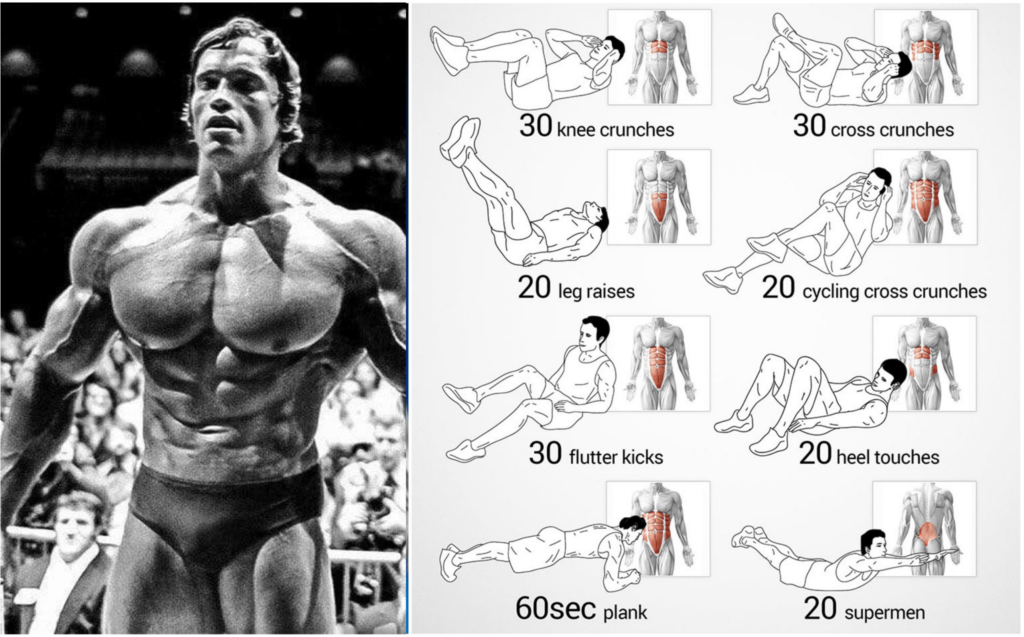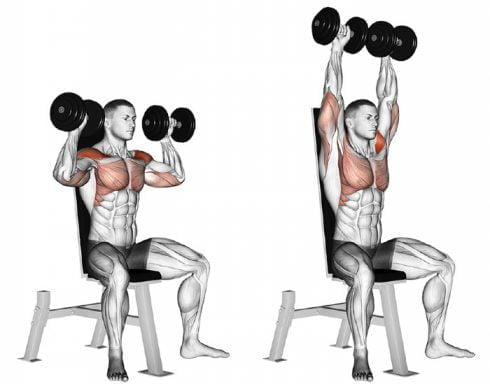Introduction
We all know that exercise is good for our health, but how many of us do it regularly? According to a recent survey, only 23% of adults in the US meet the recommended guidelines for physical activity, which is at least 150 minutes of moderate-intensity exercise per week. The most common reasons for not exercising are lack of time, motivation, and access to facilities. However, what if we told you that you don’t need to spend hours at the gym or run marathons to reap the benefits of exercise?
SHOP FOR THE FITNESS TRACKER ON AMAZON
You can improve your physical and mental health, productivity, and creativity by doing multiple short workouts throughout the day. In this article, we will explain what short workouts are, how to do them, and how they can enhance your well-being and performance. Whether you are a busy professional, a student, or a stay-at-home parent, you can find ways to incorporate short workouts into your daily routine and enjoy the positive effects. Read on to discover how short workouts can improve your life.
What Are Short Workouts and How to Do Them?
Short workouts are exercises that last for a short duration, usually less than 20 minutes, and involve high-intensity or fast movements. They can help you burn calories, improve your fitness, and save time. Some examples of short workouts are:
High-intensity interval training (HIIT): This involves alternating between short bursts of intense activity and brief periods of rest. For example, you could do 20 seconds of jump squats followed by 10 seconds of rest, and repeat for 4 minutes.
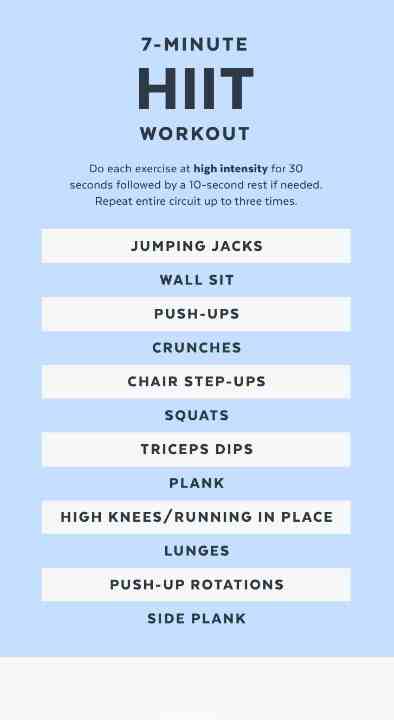
Tabata training: This is a type of HIIT that consists of 8 rounds of 20 seconds of work and 10 seconds of rest. You can choose any exercise that challenges you, such as burpees, mountain climbers, or push-ups.

High-intensity circuit training (HICT): This involves doing a series of exercises that target different muscle groups, with little or no rest between them. For example, you could do 10 reps of squats, lunges, push-ups, and planks, and repeat for 15 minutes.
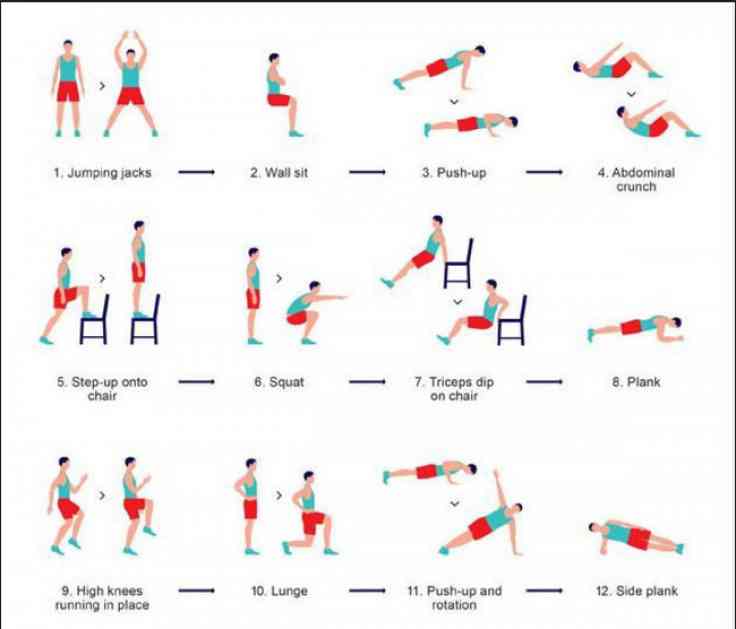
Dancing workouts: This is a fun way to get your heart rate up and work your whole body. You can follow along with online videos or just groove to your favorite music. Try to move as much as you can and enjoy yourself.
Shadowboxing: This is a form of cardio that mimics the movements of boxing, without hitting anything. You can throw punches, kicks, and dodges, while moving your feet and changing directions. You can also add some weights or resistance bands to increase the challenge.
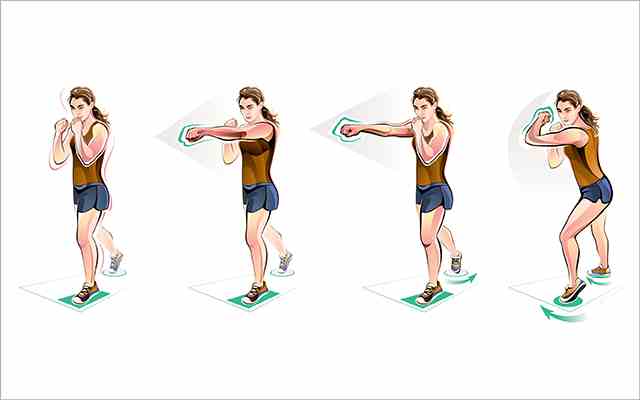
Cycling: This is a low-impact exercise that works your legs, lungs, and heart. You can cycle outdoors or on a stationary bike, and adjust the speed and resistance to suit your fitness level.
Swimming: This is a full-body exercise that improves your endurance, strength, and flexibility. You can swim laps, do water aerobics, or try different strokes.
Strength training: This involves lifting weights or using your own body weight to build muscle and bone mass. You can target different muscle groups, such as your arms, chest, back, legs, or core.
SHOP FOR THE RESISTANCE BAND ON AMAZON
To do short workouts, you need to warm up properly, choose exercises that suit your goals and fitness level, and work as hard as you can in the time you have. You can do short workouts at home, at the gym, or outdoors, depending on your preference and availability of equipment. You can also mix and match different exercises to create your own short workouts.
How Multiple Short Workouts Can Improve Your Physical Health?
Short workouts can indeed have a significant impact on your physical health. Here are some key benefits:
- Improves Overall Health: Short bouts of exercise over the course of the day produce similar effects on a range of health-related outcomes, compared with performing the same exercise in one continuous bout.
- Regulates Blood Sugar Levels: Even small doses of activity can increase blood flow and improve the body’s ability to regulate blood sugar levels. Over time, these changes could reduce your risks for conditions such as diabetes, heart disease, and stroke.
- Boosts Organ Health: When your muscles are active, they release compounds that can improve the health of organs throughout your body.
- Interrupts Sedentary Time: By getting up and moving—even for just a minute—you’re interrupting sedentary time. Research has shown that sitting too much is bad for your health, and that replacing virtually any amount of sedentary time with movement is beneficial.
- Increases Flexibility: Shorter, multiple exercise sessions provide increased flexibility in your daily schedule and allow you to prioritize your health while juggling family, work, and friend obligations.
- Boosts Mood and Energy: Aside from reducing stress and boosting your mood, getting your blood flowing also gives you energy, can prevent depression and relieve headaches, helps you sleep better, and clears your mind.
Remember, any amount of movement is better than none, and it takes surprisingly little to benefit your health. However, people who exercise in hopes of losing weight or training for a specific athletic event probably won’t get dramatic results with a few minutes per day.
How Short Workouts Can Improve Your Mental Health
Short workouts can have a significant impact on your mental health. Here are some key benefits:
- Boosts Mood and Energy: Exercise causes the release of dopamine and serotonin, both neurotransmitters that play a role in maintaining mood. It also slows the release of cortisol, the hormone that flows when we’re under chronic stress. These hormonal changes are good for our brain cells, promoting improved cognitive function and boosted mood.
- Improves Sleep: Regular exercise can help you sleep better at night.
- Helps Deal with Mental Health Challenges: Regular exercise can have a profoundly positive impact on depression, anxiety, and ADHD. It also relieves stress, improves memory, and boosts your overall mood.
- Promotes Neuroplasticity: Exercise can promote neuroplasticity by increasing certain signaling factors. Neuroplasticity is the ability of your brain and nervous system to change their activity in response to internal or external stimuli.
- Reduces Stress: The most commonly experienced, science-backed benefits of physical activity on mental health are reductions in stress.
- Improves Self-Confidence: Regular exercise can improve your self-confidence.
- Enhances Memory and Thinking: Regular exercise can lead to sharper memory and clearer thinking.
Remember, you don’t have to be a fitness fanatic to reap the benefits. Research indicates that modest amounts of exercise can make a real difference. No matter your age or fitness level, you can learn to use exercise as a powerful tool to deal with mental health problems, improve your energy and outlook, and get more out of life.
How Short Workouts Can Improve Your Productivity and Creativity
Short workouts can indeed improve your productivity and creativity. Here are some key ways:
- Boosts Brainpower: Regular exercise can enhance your cognitive performance, leading to improved productivity.
- Enhances Creativity: Studies have shown a direct link between physical activity and creativity. Active individuals tend to come up with better and more innovative ideas.
- Improves Mood and Energy: Exercise releases endorphins, the body’s natural mood elevators, which can lead to increased energy levels and a more positive outlook. This can result in improved productivity and creativity.
- Reduces Stress: Exercise is a natural stress reliever. Lower stress levels can lead to improved focus and productivity.
- Improves Sleep: Regular exercise can help you sleep better. Good sleep is essential for optimal brain function, including creativity and productivity.
- Promotes Neuroplasticity: Exercise promotes neuroplasticity, the brain’s ability to form and reorganize synaptic connections. This can lead to improved cognitive function, including creativity and problem-solving skills.
Remember, even short bouts of exercise can have these benefits. So, incorporating short workouts into your daily routine could potentially boost your productivity and creativity.
Tailoring Short Workouts to Individual Goals
Tailoring short workouts to your individual goals can help you achieve the results you want in a time-efficient and enjoyable way. Short workouts are typically 10 to 30 minutes long, and they can be done at home, at the gym, or outdoors. They can also be adapted to your fitness level, preferences, and schedule.
KEY BENEFITS OF POSTNATAL PILATES
Some of the benefits of short workouts are:
- They can boost your metabolism and burn calories for hours after you finish.
- They can improve your cardiovascular health, endurance, and strength.
- They can reduce stress, improve mood, and increase energy.
- They can prevent boredom and keep you motivated by varying the intensity, duration, and type of exercise.
To tailor short workouts to your individual goals, you need to consider the following factors:
- Your goal: What do you want to achieve with your workouts? Do you want to lose weight, build muscle, get stronger, or improve your overall fitness? This will help you choose the right exercises, frequency, and duration of your workouts.
- Your current fitness level: How fit are you right now? How often do you exercise and for how long? What are your strengths and weaknesses? This will help you set realistic and challenging goals, and avoid overtraining or injury.
- Your preferences: What kind of exercises do you enjoy and feel comfortable doing? Do you prefer cardio, strength, or flexibility training? Do you like to work out alone or with others? Do you like to follow a structured program or improvise? This will help you find workouts that suit your personality and lifestyle.
- Your schedule: How much time do you have to work out each day or week? When are you most likely to work out and stick to it? Do you have access to any equipment or facilities? This will help you plan your workouts and make them convenient and consistent.
Based on these factors, you can create your own short workouts or follow some of the examples below:
- A 10-minute HIIT workout for fat loss and cardio: This workout involves alternating between 20 seconds of high-intensity exercise and 10 seconds of rest for 10 rounds. You can choose any exercises that get your heart rate up, such as jumping jacks, burpees, mountain climbers, or sprinting.
- A 15-minute strength workout for muscle building and toning: This workout involves doing 15 repetitions of each exercise for 3 sets, with 30 seconds of rest between sets. You can choose any exercises that target your major muscle groups, such as squats, lunges, push-ups, dips, or planks. You can use your own body weight or add some resistance with dumbbells, bands, or kettlebells.
- A 20-minute yoga workout for flexibility and relaxation: This workout involves doing a series of yoga poses that stretch and strengthen your whole body, while also calming your mind and breathing. You can choose any pose that suits your level and goal, such as downward dog, warrior, triangle, or bridge. You can use a mat, a towel, or a blanket for comfort and support.
- A 30-minute circuit workout for all-around fitness and fun: This workout involves doing a variety of exercises for a certain amount of time or reps, with little or no rest between them. You can choose any exercises that challenge your cardio, strength, and flexibility, such as skipping, squats, push-ups, sit-ups, or lunges. You can use any equipment or objects you have at hand, such as a jump rope, a chair, a ball, or a bottle of water.
SHOP FOR THE WORKOUT BOTTLE ON AMAZON
I hope this helps you tailor short workouts to your individual goals. Remember to warm up before and cool down after each workout, and drink plenty of water and eat a balanced diet to support your fitness.
FAQs
Q 1. How long should each short workout session be?
Answer: The ideal duration varies based on individual fitness levels and goals, but typically, sessions can range from 10 to 30 minutes. The key is to maintain intensity.
Q 2. Can I achieve the same results with short workouts as with longer, traditional ones?
Answer: Yes, studies suggest that multiple short workouts can be as effective as longer sessions, especially when it comes to weight management, cardiovascular health, and metabolism.
Q 3. How many short workouts should I aim for in a day?
Answer: It depends on your schedule and fitness goals. Starting with 2-3 short sessions per day and gradually increasing can be a good approach. Listen to your body and adjust accordingly.
Q 4. Is it suitable for all fitness levels?
Answer: Yes, the flexibility of short workouts makes them adaptable for all fitness levels. Beginners can start with shorter sessions and gradually increase duration and intensity.
Q 5. Can I use short workouts for muscle building?
Answer: Absolutely. While longer sessions are common for muscle building, short, intense workouts can stimulate muscle growth and are effective, especially when targeting specific muscle groups.
Q 6. How do I stay motivated for multiple short workouts throughout the day?
Answer: Find activities you enjoy, set realistic goals, use workout apps for guidance, and enlist a workout buddy. Mixing up exercises can also keep things interesting.
Q 7. Is it better to do short workouts at specific times of the day?
Answer: The best time depends on personal preference and schedule. Some find morning sessions boost energy, while others prefer breaking up the day with workouts during lunch or evening.
Q 8. Can I do the same exercises in each short session, or should they be different?
Answer: While routine can be beneficial for consistency, incorporating variety helps target different muscle groups and prevents boredom. Balance is key.
Q 9. Are short workouts suitable for weight loss?
Answer: Yes, multiple short workouts can be effective for weight loss by increasing overall caloric expenditure and improving metabolism.
Q 10. How can I make the most out of short workout sessions?
Answer: Focus on intensity, incorporate high-intensity interval training (HIIT), use compound exercises, and ensure proper form to maximize the effectiveness of each short session.
Conclusion
In this article, we have shown you how doing multiple short workouts throughout the day can improve your physical and mental health, productivity, and creativity. Short workouts are easy to do, effective, and fun. They can help you burn calories, build strength, reduce stress, enhance mood, boost brainpower, and achieve your goals. You don’t need a lot of time, equipment, or motivation to do them.
All you need is a few minutes and a willingness to try something new. So, what are you waiting for? Start doing short workouts today and see the difference for yourself. We would love to hear from you. Share your thoughts, questions, or feedback in the comments below or contact us via email. If you enjoyed this article, please subscribe to our blog for more tips and tricks on fitness, health, and wellness. Thank you for reading and have a great day.

Good day, and welcome to Fitthour. My name is Shubham Vijay, and I am a certified personal trainer and nutrition coach with 6 years of experience in the fitness industry. At Fitthour, we specialize in types of training, such as strength training, cardio, or HIIT, and our mission is to help clients achieve their fitness goals and improve their overall health.

